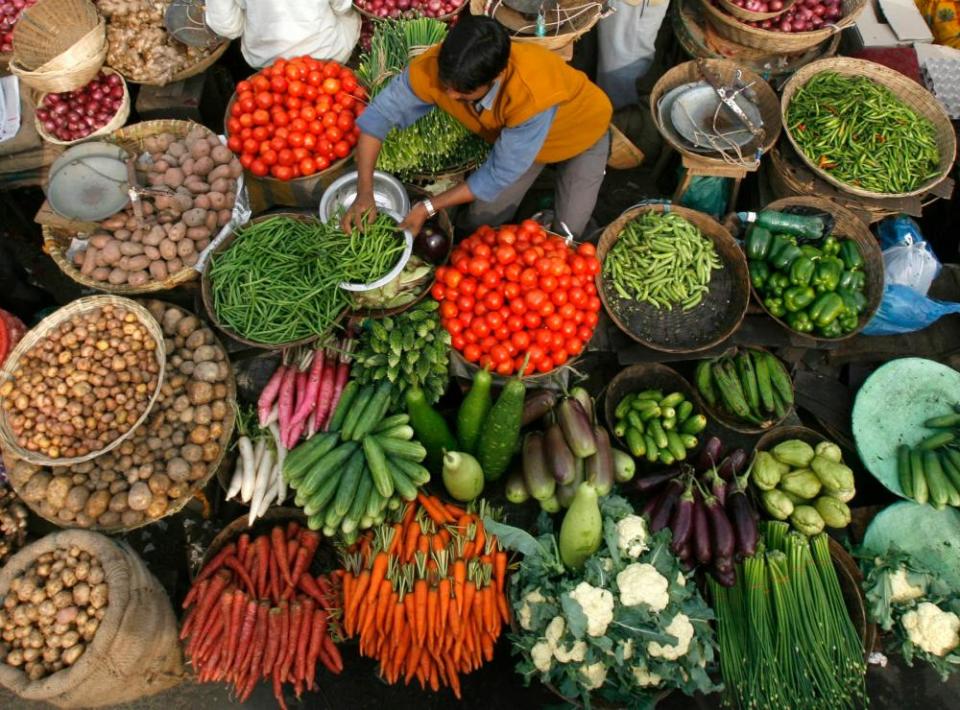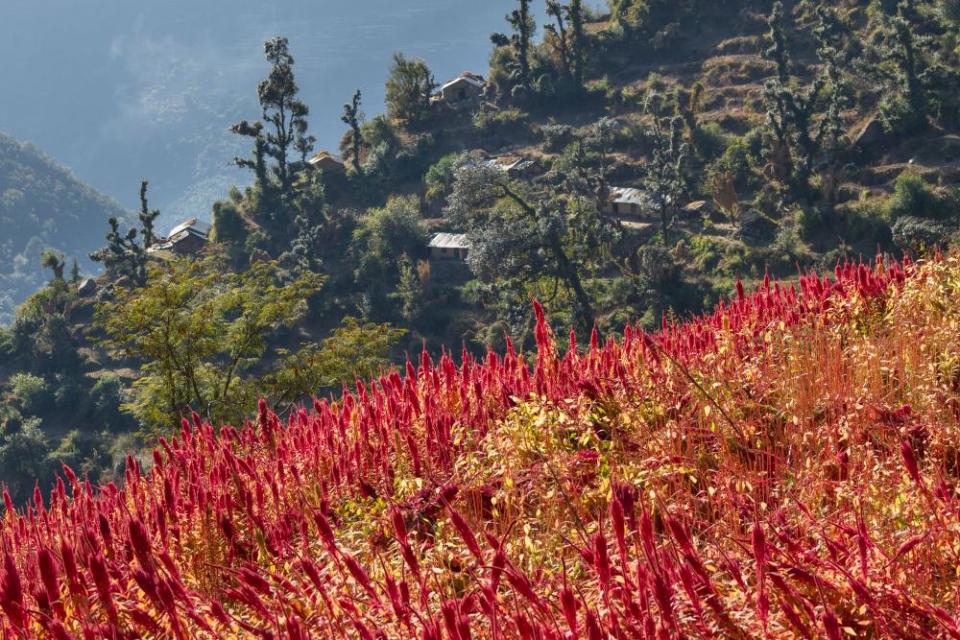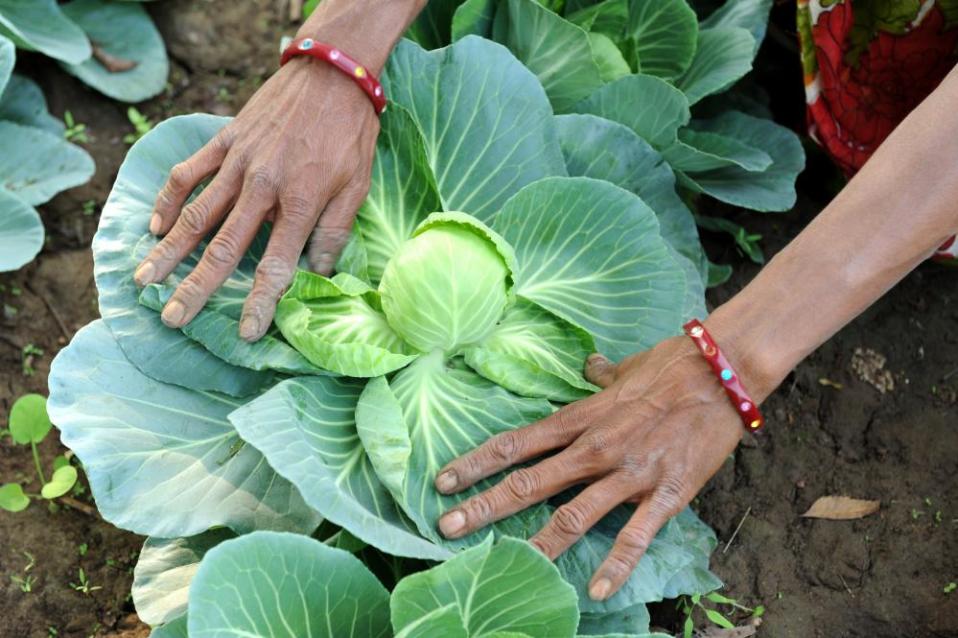‘Mind-boggling variety’: the food crusaders preserving India’s heritage

A small army of botanical heritage enthusiasts is spearheading a movement in India for the revival and preservation of the country’s rapidly vanishing food biodiversity by bringing back the rich crop varieties that thrived in the past, but are now on the verge of extinction.
Babita Bhatt, a 43-year-old former software professional, is just one of these crusaders, who are eschewing established careers and fat pay packets to become farmers, activists and entrepreneurs.
Fear of feeding her young daughter foods covered in pesticides was the trigger for Bhatt to move to the hills of Uttarakhand. Trading a steady income for the financial insecurity of an entrepreneur, she launched Himalaya2Home, a self-funded venture, in 2018.
“Growing up in the hills, I was used to eating delicious, organic produce cultivated in the mountains. So when I moved to the city after marriage, the low-grade produce and the non-availability of a steady, reliable supply of organic produce hit me hard,” says Bhatt. “For instance, the store-bought barnyard millet was polished white and tasteless, unlike the one in the hills which was unpolished and delicious. The city vegetables and fruits also lacked lustre, texture and taste.”
Bhatt launched a supply chain model based on sustainable indigenous and heirloom seed-based agriculture. “The list of unknown or lesser-known indigenous crops in India is mind-boggling,” she says. “All these varieties were widely grown and eaten till just 100 years ago. However, they disappeared with the Green Revolution [initiated in the 1960s], which placed a premium on high-crop yield over soil preservation and quality produce.
“Rampant use of pesticides and tampering of seeds through GMO further sounded the death knell of many indigenous seed varieties that had medicinal and curative properties. A well-documented archive of seeds saved in community seed banks is the need of the hour as it can play a pivotal role in preserving fast-disappearing indigenous produce,” she says.
The list of unknown or lesser-known indigenous crops in India is mind-boggling
Babita Bhatt
Over three years, Bhatt has forged successful partnerships with several grassroots NGOs that share her vision, across Uttarakhand and the north-eastern states. She now has fully functional production and packaging facilities in Dehradun and an online marketplace with more than 110 products and almost 3,500 regular customers across India.
She says: “We want to harness traditional knowledge of agriculture, by forming community partnerships, imparting training and creating a reliable supply chain to help improve incomes by guaranteed buyback. We’re also working with Beej Bachao Aandolan, an activist group, to revive and promote traditional seeds-based agriculture through an heirloom seed bank for seed conservation and propagation.”
Bhatt’s concerns, say experts, reflect an agricultural trend that has brought about tectonic shifts in cultivation techniques across India and the world. Since the late 1800s, the exponential growth of farm mechanisation has prioritised productivity at the cost of soil preservation and genetic diversity. India’s green revolution further undermined agricultural diversity, replacing it with fewer and less nutritious but resilient varieties of crops.

In its first global report on the state of biodiversity for food and agriculture, released last year, the Food and Agriculture Organization at the UN found that of approximately 6,000 plant species cultivated for food, fewer than 200 contribute substantially to global food output, and only nine account for 66% of total crop production.
In India, many varieties of wheat, beans, pumpkin squash, cucumber gourds, and brinjal (aubergine) have been lost.
“For India, conservation of biodiversity is crucial not only because it provides several goods and services necessary for human survival, but also because it is directly linked with providing livelihoods to and improving socio-economic conditions for millions of local people, thereby contributing to sustainable development and poverty alleviation,” says a report by the UN Convention on Biological Diversity.
Retired octogenarian schoolteacher Natabar Sarangi co-founded the Rajendra Indigenous Agriculture Research Centre in coastal Odisha to preserve, multiply and distribute more than 700 varieties of native rice varieties over 25 years.
Sarangi says that in India there were once more than a million landraces of rice with diverse and valuable properties. But after the green revolution, when a few high-yielding varieties were introduced, a huge majority vanished.

“After 32 years of service as a government school teacher, I turned back to my ancestral profession of chemical-free farming on a 3.5-acre [piece of] land to reverse in whatever little way I could the mindless mechanization in agriculture as well the unchecked use of chemical fertilisers/pesticides that were ruining the soil,” says Sarangi, who is 87.
Sarangi has trained more than 2,000 farmers on the use of native seeds, organic manure and pesticides. The work is funded through the sale of seeds and donations from well-wishers.
“We want to revive traditions and return the former glory of native varieties. Our library has over 500 books on organic farming from different countries. People have reservations organic farming can’t feed an entire population,” he says. “But my counter to that, and experience of over 65 years in farming, suggests that not only can it feed our country but also provide surplus produce to export to other countries and boost our economy.”
According to Dr Prabhakar Rao, an advocate of natural or Vedic farming – rather than organic farming – and founder of Hariyalee Seeds, India has lost nearly 99% of its biodiversity in vegetables in the past 100 years. Travelling to remote corners of India and interacting with famers and other agricultural stakeholders led the agriculturist, who has a PhD in genetics and plant breeding, to launch a seedbank in 2009.
“Over the last decade, I have stabilised (genetically and environmentally) about 200 seeds from the 600 that I collected. It takes three to four years to stabilise one seed variety, a process which makes it ready for use and distribution,” he explains.
Cookbooks written 100 years ago mention dishes with vegetables that no longer exist
Dr Prabhakar Rao
Rao’s farm near Bengaluru is a riot of surreal colours. Red okra peeks from some bushes while scarlet corn and violet peppers dangle like ornamental earrings from others. Black and indigo tomatoes and sapphire-hued cucumbers add to the stunning kaleidoscope. “My biggest focus currently is to work with urban gardeners who can introduce these varieties to consumers. Once this trend becomes commercially viable, farmers will find a bigger and more lucrative market for their vegetables and mass scale will be achieved,” he says.
In addition to the irreversible loss of biodiversity, Rao warns that the loss of vegetable varieties also poses a serious threat to India’s 5,000-years of cultural heritage. “Cookbooks written over 100 years ago mention dishes crafted from a number of vegetables that no longer exist. Those dishes have disappeared from our repertoire and so has that part of our priceless culinary heritage.”
One of the biggest challenges, he says, is that unlike GMO/hybrid vegetable seeds which are named and commercially sold, newly discovered indigenous seeds struggle with an identity crisis.
“Currently, we have over 30 varieties of tomatoes, including blue, brown and purple, with different tastes and textures; 28 types of brinjals; 10 different cucumbers; seven types of okra and so on. But how to name them?”
To temporarily circumvent the problem, the produce is being named after the places they came from. For instance, there is Meghalaya red pumpkin, named after one of India’s north-eastern states, and Pune Kakri, a type of gourd which thrives in a city in Maharashtra. But Rao argues that the government and institutions need to step in to guide people like him.
According to Rao, indigenous varieties of crops are not only good for health, they also protect us against climate change. “Hybrid or GMO seeds work on the presumption that climatic conditions will remain ideal forever; that water will be plentiful, soil will have nutrients etc. But as climate change gets more severe, as it will, the foundational principles on which these seeds are grown will be rudely shaken.
Related: Wild seed collectors turn Indiana Jones in the search for resilient crops
“At that point, if we don’t have the genetic biodiversity that exists in heirloom seeds how are we going to get the genes to combat climate change? Where will the hardy varieties which are adaptable/resistant to climatic fluctuations and oscillations come from?” the activist asks.
Find more age of extinction coverage here, and follow biodiversity reporters Phoebe Weston and Patrick Greenfield on Twitter for all the latest news and features

